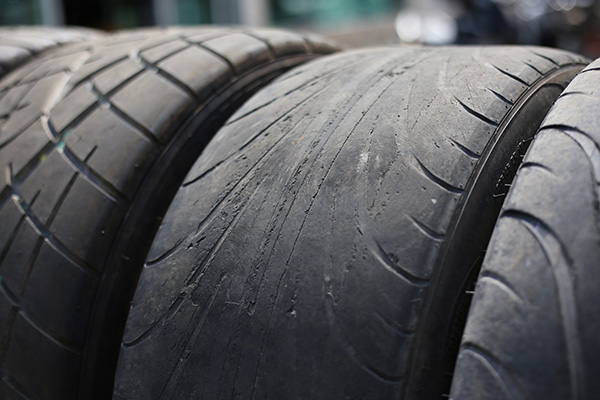
Are your tires due for a change? Learn to recognize the signs that it's time for new rubber on your wheels. Don't wait until it's too late—stay safe on the road with fresh, reliable tires.
1. Tread Depth
Insufficient tread depth is one of the most obvious signs that it's time for new tires. Use the penny test to check if the tread depth is shallow, indicating a need for replacement. If you can see all of Lincoln's head when you insert a penny into the tread, it's time for new tires. Maintaining adequate tread depth ensures proper traction and grip, especially in wet or slippery conditions.
2. Uneven Tread Wear
Uneven tread wear can signal alignment issues or improper tire inflation. Look for irregular wear patterns, such as cupping or scalloping, which may indicate the need for new tires. Addressing alignment issues promptly can prevent premature tire wear.
3. Cracks and Bulges
Inspect your tires regularly for sidewall cracks, bulges, or blisters. These structural damages can compromise tire integrity and safety, warranting immediate replacement. Age, overloading, or impacts with potholes or curbs often cause cracks and bulges. Replace damaged tires promptly to prevent blowouts or tire failures on the road.
4. Excessive Vibration
Experiencing excessive driving vibration, especially at high speeds, could indicate tire problems. Vibrations may stem from tire imbalances, worn-out components, or damaged tires requiring replacement. Ignoring vibrations can further damage your vehicle's suspension system and compromise your safety on the road.
5. Age of Tires
Regardless of mileage, tires deteriorate over time. Check the manufacturing date on the tire sidewall—tires older than five years, even with sufficient tread, may be prone to failure and should be replaced. Exposure to sunlight, heat, and harsh weather conditions can accelerate tire aging, making regular inspections crucial for your safety. Don't risk driving on old tires—replace them as needed to ensure optimal performance and safety.
6. Tire Pressure Monitoring System (TPMS) Warnings
Modern vehicles have TPMS sensors that alert drivers to tire pressure abnormalities. Ignoring TPMS warnings could lead to tire damage or failure, emphasizing the importance of prompt inspection and replacement. Monitor your TPMS alerts and promptly address any issues to maintain optimal tire performance and safety.
7. Seasonal Considerations
Different weather conditions demand specific tire types for optimal performance and safety. Explore the significance of seasonal tire changes and how they contribute to the overall driving experience and vehicle safety. From winter tires for enhanced traction on snow and ice to all-season tires for year-round versatility, choosing the right tires for the season can significantly improve your driving comfort and safety.
Don't wait until it's too late—visit Grayson Tire & Auto Center today for a comprehensive tire inspection and replacement. Ensure your safety on the road with our expert tire services.